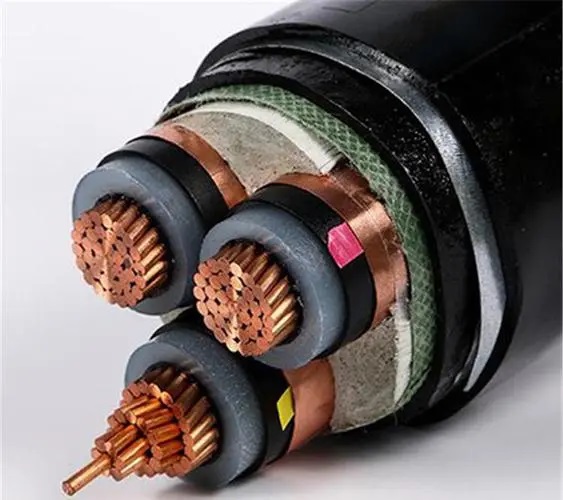Introduction
Remote monitoring control cables play a pivotal role in various industries, enabling real-time monitoring and control of critical systems and equipment from a remote location. In today's interconnected world, the need for efficient and reliable remote monitoring solutions has become increasingly important. This article explores the significance of remote monitoring control cables, their applications across different industries, benefits, and future trends shaping the remote monitoring landscape.
Understanding Remote Monitoring Control Cables
Remote monitoring control cables are specialized cables designed to facilitate the transmission of data and signals between control systems and remote monitoring devices. These cables are engineered to withstand harsh environmental conditions, interference, and provide reliable communication over long distances. They are essential components in industries such as telecommunications, oil and gas, energy, transportation, and manufacturing, where remote monitoring of equipment and systems is crucial for operational efficiency and safety.
Applications of Remote Monitoring Control Cables
1. Telecommunications Industry: In the telecommunications sector, remote monitoring control cables are used to monitor network performance, signal strength, and equipment status. These cables enable telecom companies to remotely manage and troubleshoot network issues, ensuring uninterrupted service delivery to customers.
2. Oil and Gas Industry: Remote monitoring control cables play a vital role in the oil and gas sector by enabling remote monitoring of drilling operations, pipelines, and offshore platforms. These cables help in detecting leaks, pressure fluctuations, and equipment malfunctions in real-time, enhancing operational safety and efficiency.
3. Energy Sector: Power plants and renewable energy facilities rely on remote monitoring control cables to monitor energy production, grid stability, and equipment performance. These cables enable operators to remotely control power generation units, detect faults, and optimize energy output, contributing to a reliable and sustainable energy supply.
4. Transportation Industry: In the transportation sector, remote monitoring control cables are used in railway signaling systems, traffic management, and vehicle tracking systems. These cables facilitate real-time communication between control centers and transportation infrastructure, ensuring smooth operations and passenger safety.
5. Manufacturing Rubber cable for underground installations : Remote monitoring control cables are employed in manufacturing facilities to monitor production processes, equipment health, and quality control parameters. These cables enable manufacturers to remotely adjust settings, track production metrics, and prevent downtime, leading to improved productivity and product quality.
Benefits of Remote Monitoring Control Cables
1. Enhanced Efficiency: Remote monitoring control cables streamline data transmission and communication between control systems and monitoring devices, enabling quick decision-making and real-time intervention. This results in improved operational efficiency and reduced downtime.
2. Improved Safety: By enabling remote monitoring of critical systems and equipment, these cables enhance safety measures by detecting potential hazards, malfunctions, and anomalies in real-time. Operators can take proactive measures to prevent accidents and ensure a safe working environment.
3. Cost Savings: Remote monitoring control cables help in reducing maintenance costs, minimizing equipment downtime, and optimizing resource allocation. By remotely monitoring and controlling systems, companies can avoid costly breakdowns, improve asset utilization, and extend equipment lifespan.
4. Scalability: Remote monitoring control cables offer scalability, allowing companies to expand their monitoring capabilities as their operations grow. These cables can accommodate a wide range of sensors, devices, and control systems, ensuring flexibility and adaptability to changing business needs.
5. Remote Accessibility: With remote monitoring control cables, operators can access and control systems from anywhere, using mobile devices or computers. This remote accessibility enables real-time monitoring, troubleshooting, and decision-making, even in geographically dispersed locations.
Future Trends in Remote Monitoring Control Cables
1. Integration of IoT Technology: The integration of Internet of Things (IoT) technology with remote monitoring control cables is a growing trend, enabling seamless connectivity and data exchange between devices and systems. IoT-enabled cables can collect and transmit real-time data for advanced analytics and predictive maintenance.
2. Artificial Intelligence and Machine Learning: The use of artificial intelligence (AI) and machine learning algorithms in remote monitoring control cables is on the rise, enhancing predictive capabilities and automation. AI-powered cables can analyze data patterns, predict equipment failures, and optimize system performance.
3. Cloud-Based Monitoring Solutions: Cloud-based remote monitoring solutions are becoming increasingly popular, offering secure data storage, remote access, and real-time monitoring capabilities. Remote monitoring control cables integrated with cloud platforms enable centralized data management and accessibility from any location.
4. Enhanced Security Features: As cybersecurity threats continue to evolve, remote monitoring control cables are incorporating advanced security features such as encryption, authentication, and intrusion detection. These security measures help in safeguarding data integrity and protecting critical infrastructure from cyber attacks.
5. Energy-Efficient Designs: Manufacturers are developing energy-efficient remote monitoring control cables that consume less power and reduce environmental impact. These cables feature low-power components, optimized designs, and energy-saving protocols to minimize energy consumption without compromising performance.
Conclusion
Remote monitoring control cables play a crucial role in modern industries, enabling efficient and secure remote monitoring of critical systems and equipment. With their ability to transmit data over long distances, withstand harsh environments, and provide real-time communication, these cables contribute to enhanced operational efficiency, safety, and cost savings. As technology advances and new trends emerge, remote monitoring control cables are poised to evolve further, offering innovative solutions for remote monitoring challenges across diverse industries. By embracing the benefits of remote monitoring control cables and staying abreast of emerging trends, businesses can optimize their operations and stay competitive in a rapidly changing digital landscape.

